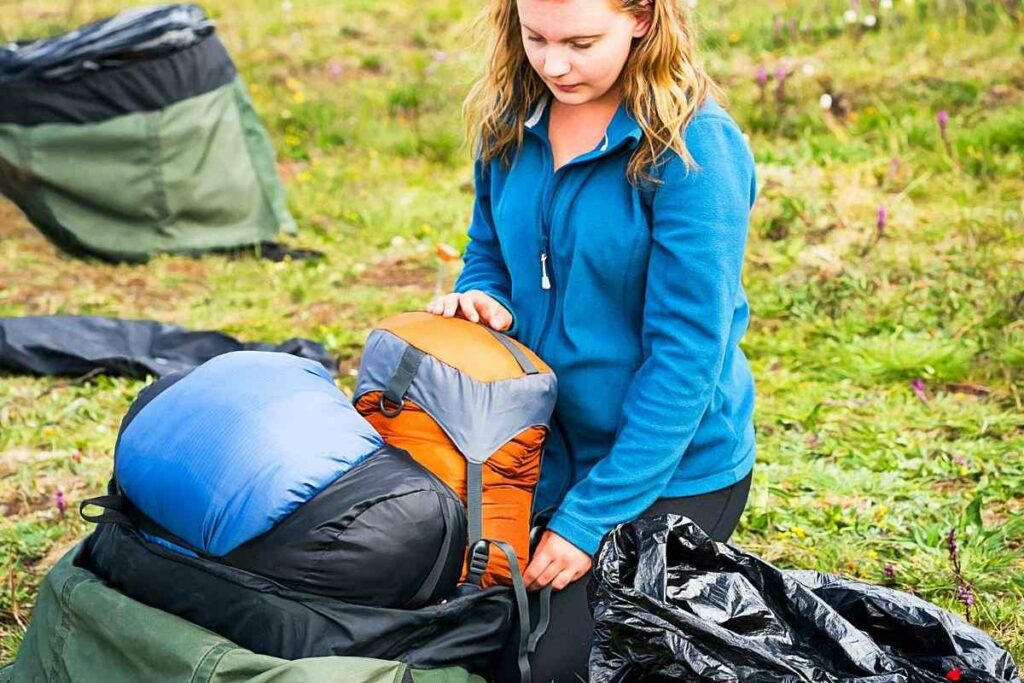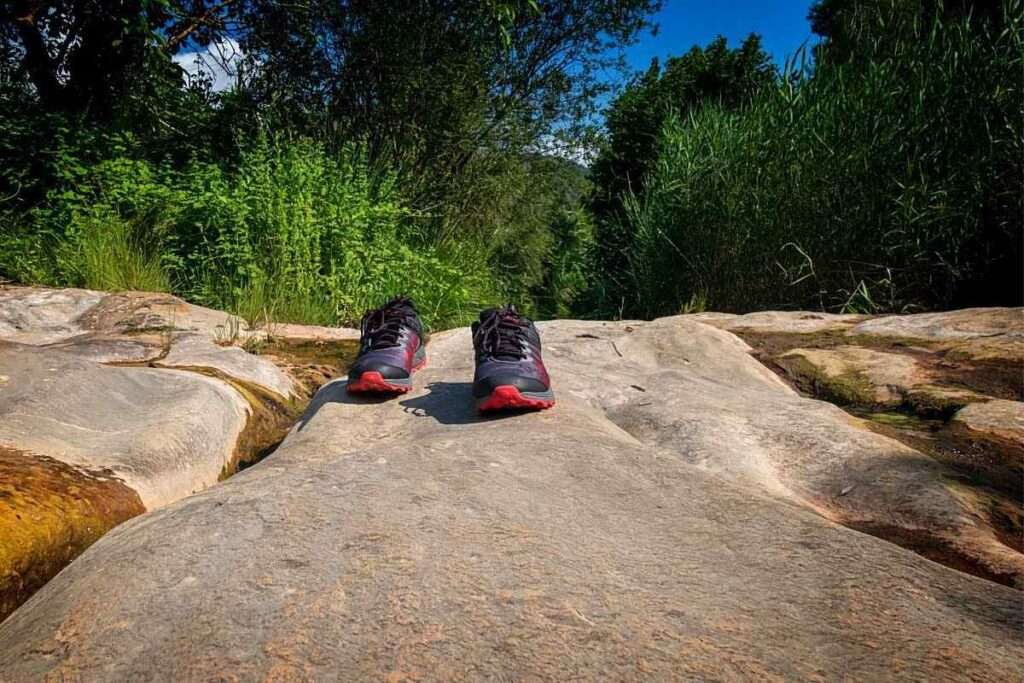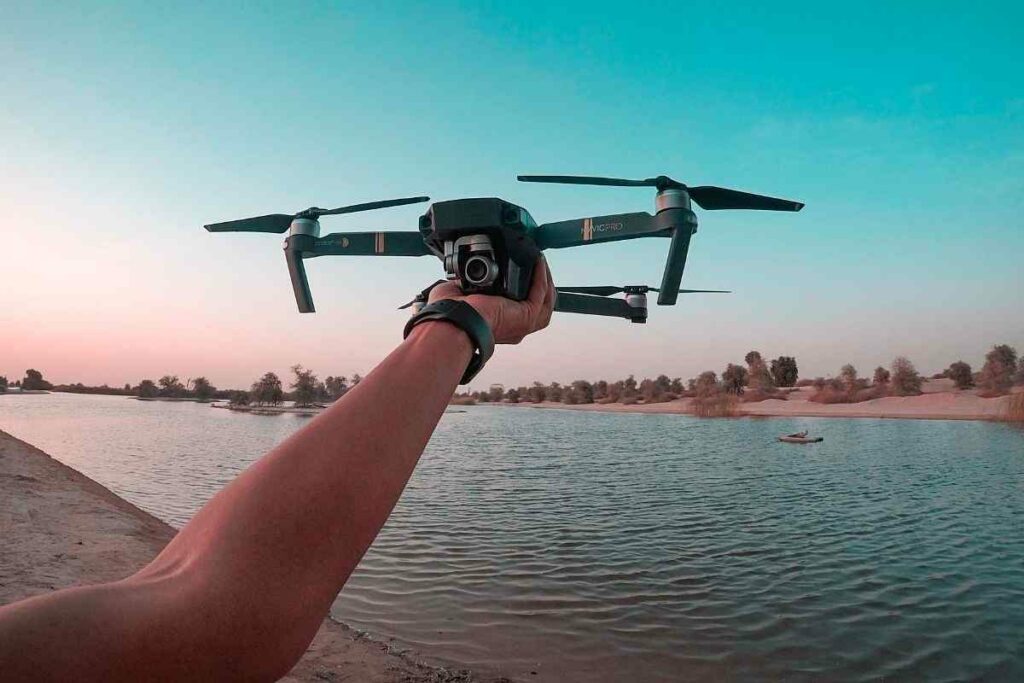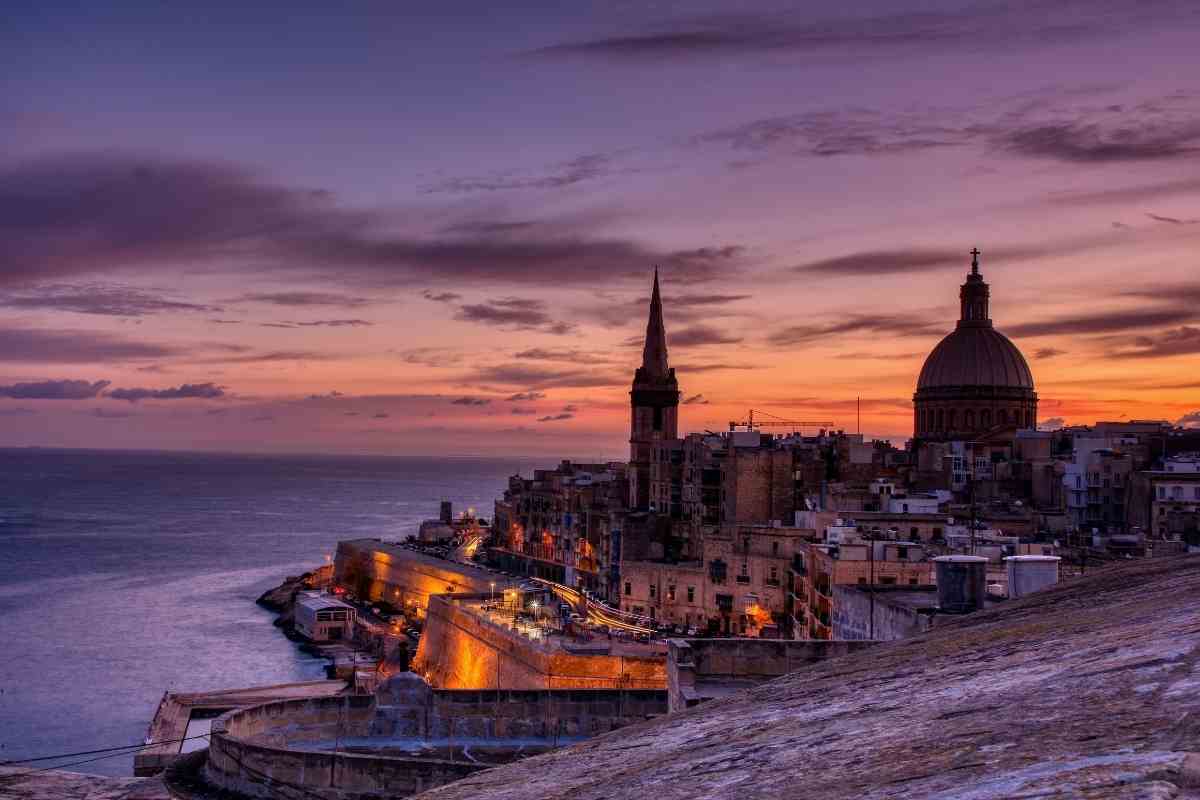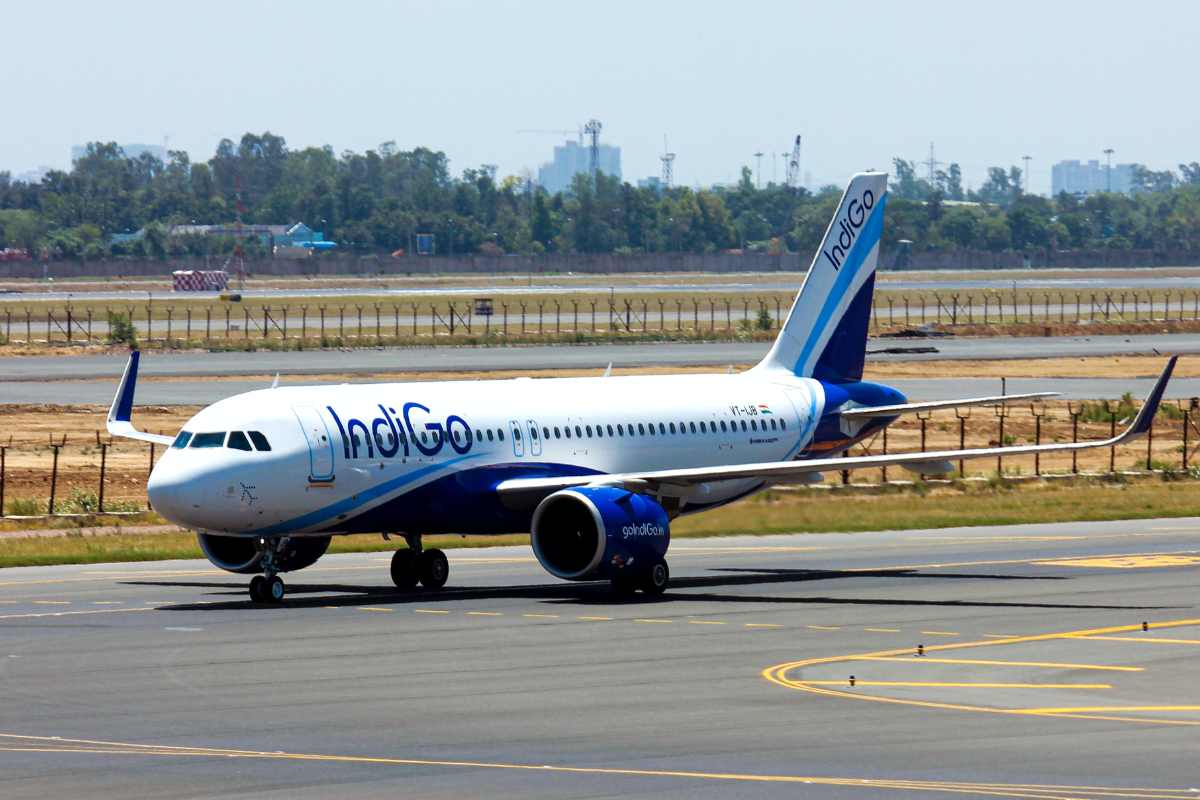The wildebeest migration is a spectacle to behold and is one of the world’s seven wonders.
This is why it has been documented countless times on NatGeo.
However, the action on T.V. is only the tip of the iceberg, and hundreds of thousands of safari enthusiasts travel to catch a glimpse of this world wonder firsthand.
That said, if you don’t plan your travel itinerary correctly, your trip to the East African savannah may be unsatisfactory.
The best time to see the wildebeest migration is July to September.
During This Period – You can enjoy the gnus crossing the treacherous Mara River from the Serengeti National Park into the Maasai Mara National Reserve.
What Is The Best Time To See The Wildebeest Migration?
The wildebeest migration is a continuous loop across the vast Serengeti – Mara ecosystem, which covers approximately 12,000 square miles.
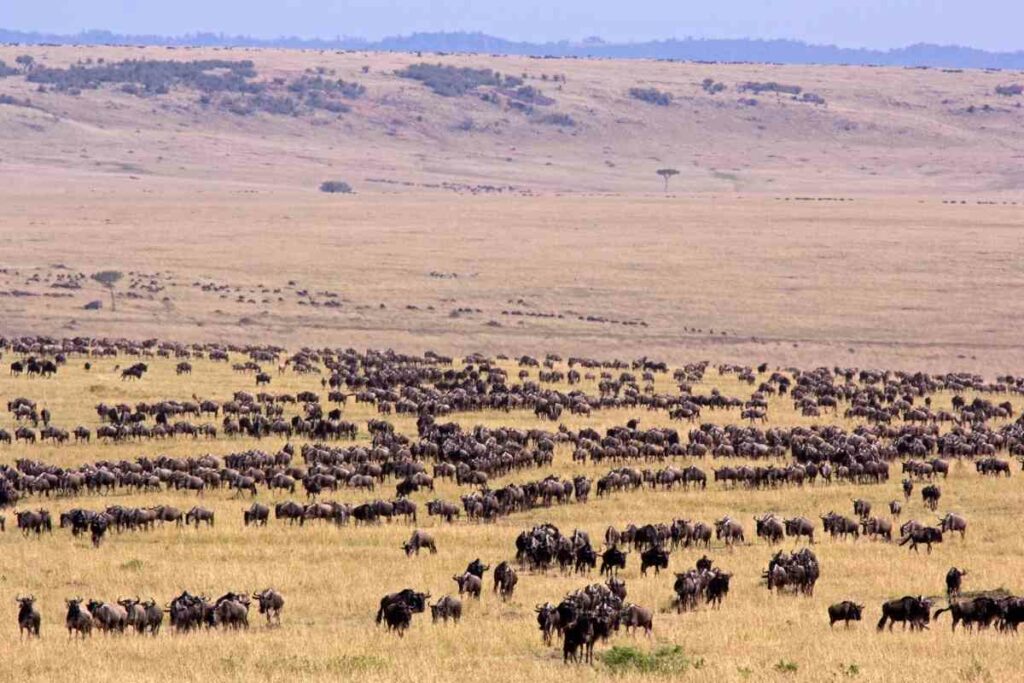
The migration is an annual trek that starts from the plains around the Ngorongoro Conservation Area (Southern Serengeti) through the Grumeti Game Reserve (Western Serengeti) to the Maasai Mara National Reserve (North of Serengeti) and back.
The Northern migration is the most prolific and best known globally. It starts as soon as the long rains end in May.
The long rains are unpredictable and may continue up until June.
With plenty of pasture still available, the migration into the Mara will usually start late.
Typically – Within a few weeks after the start of the dry season, the 1.5 million wildebeest population obliterates the green grass on the Western plains.
The herds and other grazers, such as zebras, elands, and gazelles, gradually start moving north towards the Kenyan border, where the grass is greener.
Besides, the northern region has better rainfall, averaging 1200 mm yearly compared to 400 mm in the Southeast regions around the Ngorongoro crater.
The animals start trickling into the Mara River’s shores in late July. The herd is so huge that it is visible from space.
After a while, brave wildebeests will make the daring attempt to cross over to the Maasai Mara using various routes along the river Mara.
Not all the animals will cross the river after seeing some of their kind being massacred by the Nile crocodile or being swept away by the raging Mara waters.
The crossing is also iconic since it attracts almost all the savannah predators to the area, including the shy leopards.
Birds also swirl around the herd to pick up bugs ruffled up the colossal mass of the migrating wildebeests.
The commotion usually lasts for a couple of days, with only the strongest and fittest surviving the crossing and the marauding predators on either side of the river banks.
Park Entry Fees
While the Mara and Serengeti share an open border, they are under different jurisdictions.
Consequently, each park has its costs and fees as determined by the government. The prices are on a daily basis.
Let’s look at some of the standard payments in each park.
Maasai Mara National Reserve
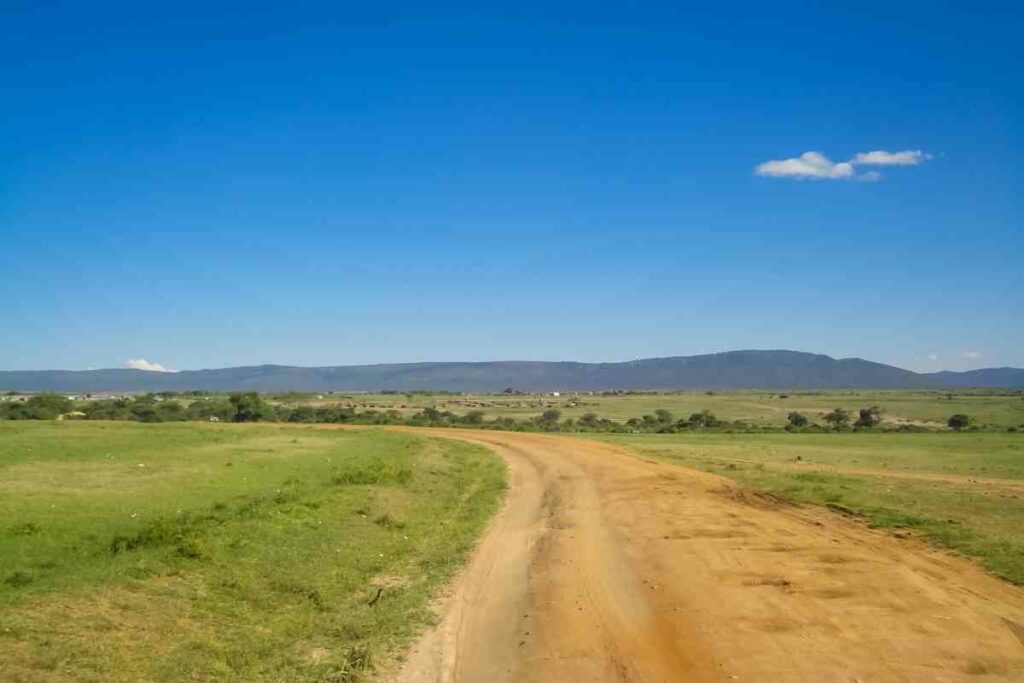
Entry Fees
The entry fees depend on whether you reside in a lodge or camp inside or outside the main Maasai Mara National Reserve.
If you book accommodation within the reserve, the charges are $70 for adults and $40 for children under 12.
If you stay outside the main reserve, the adult rate is $80, while the child rate is $45.
Camping Fees
Maasai Mara has public and private campsites. The daily adult rate is $30 and $40 for the public and private camps, respectively.
Children 3-18 years pay $20 for both sites. Private campsites have a mandatory Kshs 10,000 ($100) booking fee and Kshs 4,000 ($40) to hire two rangers for overnight camp security.
Ranger Fees
$30 for a game drive exceeding 6 hours and $15 for a drive 6 hours or less.
Serengeti National Park
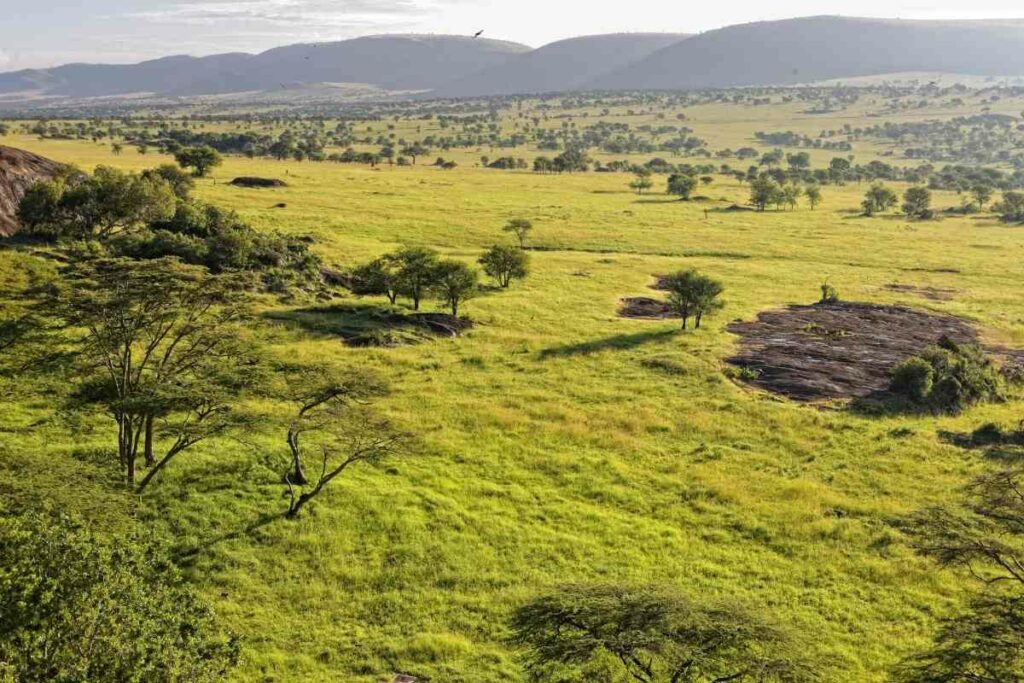
Entry Fees
$70 for 16 years and over, $20 for 5-15 year-olds, and it is free for children above 5 years.
Camping Fees
Public campsites charge $30 (above 16 years) and $5 for 5-15 years. Seasonal camps charge $60 per night for adults and $10 for kids, with no charges for kids below 5 years old.
Ranger Fees
You can expect paying $20 per guide.
How To Minimize Expenditure
Book in Advance
The Great Wildebeest Migration is the peak season for camps and lodges in the Mara and the Serengeti.
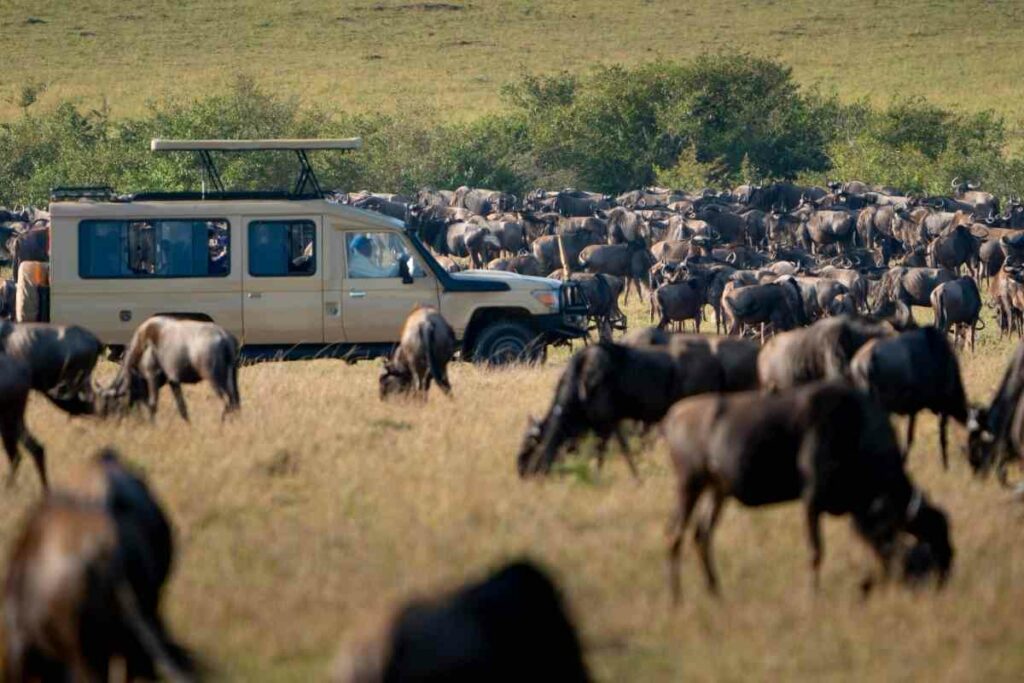
Planning travel and accommodation earlier would be best to avoid hiked prices or services.
Luckily – Most of these facilities allow you to book up to 12 months in advance.
Pay Using Local Currency
Most establishments across Kenya and Tanzania are slow to adjust their prices based on the current value of the US dollar.
For example, the USD to Kenya Shilling exchange rate has remained constant ($1 to KSH 100).
Despite the recent rise of the dollar ($1 to KSH 120) most establishments still use the old rate, therefore it can be considerably cheaper if you paid using the local currency.
That said, most establishments also accept card payments, reducing withdrawal charges and the need to carry loads of cash around.
Adhere to the Park Rules
The parks have several strict guidelines you should observe during the migration.
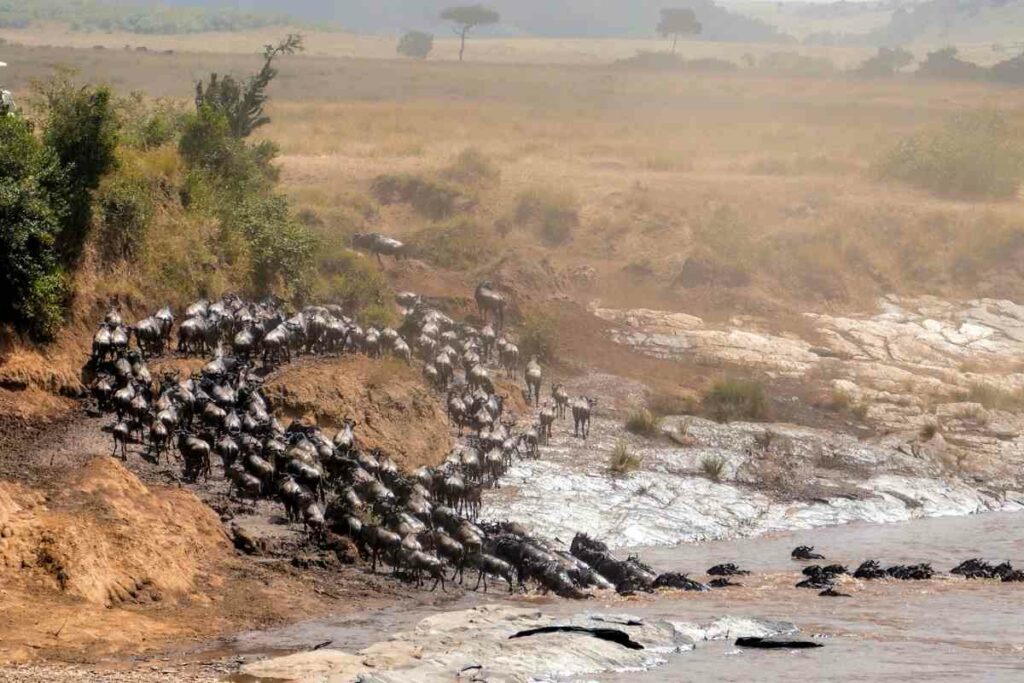
They include:
- no littering
- speed limits
- noise
- and time to exit the park
Breaking any regulations may lead to fines of up to $500 or removal from the park immediately without a refund.
Maasai Mara or Serengeti?
Which park is the best to view the best wildebeest migration has been a contentious issue over the years.
While Serengeti boasts a richer bio-diversity, cheaper park fees, and seasonal discounts,
Maasai Mara has more affordable and better lodges and camps, provided you book early enough.
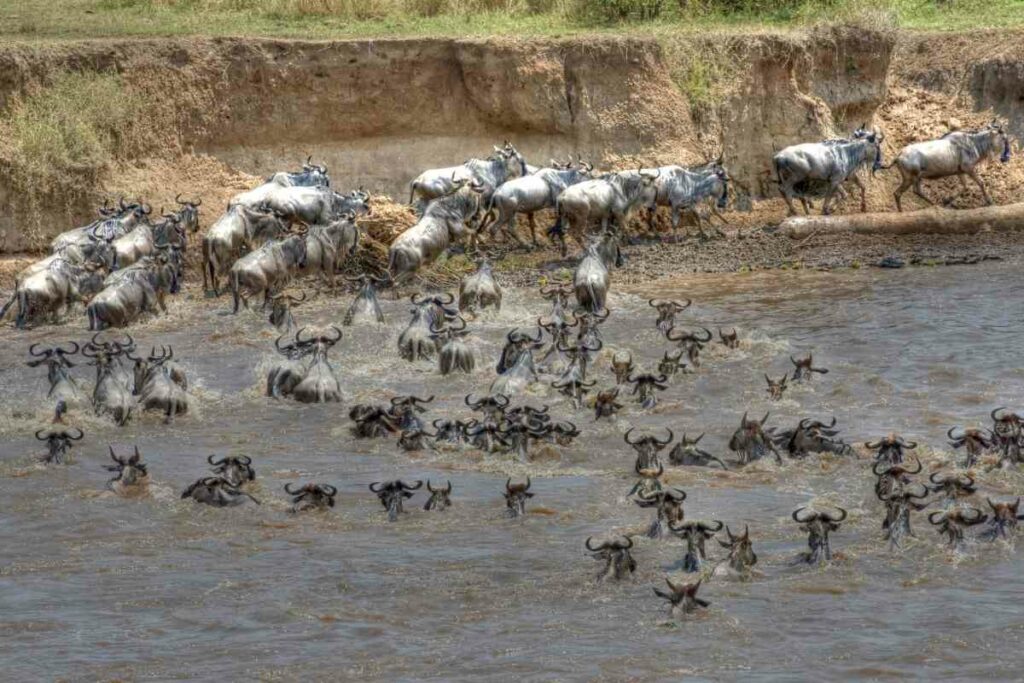
It is also easily accessible; 6-5 hours by road and a 1-hour flight averaging $200 from Nairobi, Kenya’s capital.
The best park to experience the migration trickles down to personal preferences.
Final Word
You can view and track all the Southern, Western, and Northern wildebeest migrations all year long across the Serengeti.
However, the Mara crossing, which occurs between July and August, is the most spectacular.
Fortunately, it coincides with the summer holidays in the U.S., which is a great time to go on a safari!
- Ulanzi U60 RGB Video Light Review: Top Vloggers’ Choice?
- Stuff Sack Vs. Compression Sack (Complete Comparison)
- Best Wetsuits for Surfing (Top 7 Picks & Buying Guide)
- Best Shoes For Slippery Rocks (Top 8 Picks & Buying Guide)
- Packing Cubes Vs. Compression Bags (All You Need to Know)
- Best Drones for Hiking (Top 4 Picks & Buying Guide)


